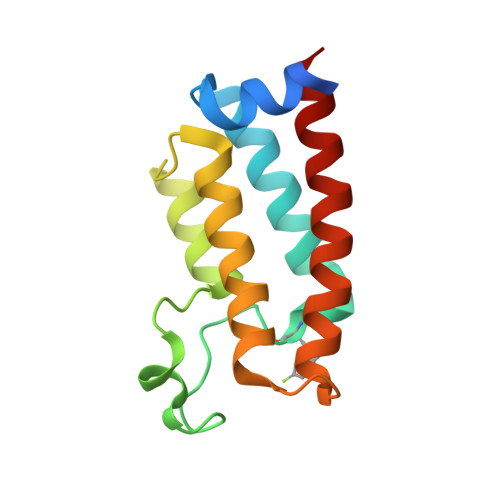Selectivity, ligand deconstruction, and cellular activity analysis of a BPTF bromodomain inhibitor
Kirberger, S.E., Ycas, P.D., Johnson, J.A., Chen, C., Ciccone, M.F., Woo, R.W.L., Urick, A.K., Zahid, H., Shi, K., Aihara, H., McAllister, S.D., Kashani-Sabet, M., Shi, J., Dickson, A., Dos Santos, C.O., Pomerantz, W.C.K.(2019) Org Biomol Chem 17: 2020-2027
- PubMed: 30706071
- DOI: https://doi.org/10.1039/c8ob02599a
- Primary Citation of Related Structures:
7JT4 - PubMed Abstract:
Bromodomain and PHD finger containing protein transcription factor (BPTF) is an epigenetic protein involved in chromatin remodelling and is a potential anticancer target. The BPTF bromodomain has one reported small molecule inhibitor (AU1, rac-1). Here, advances made on the structure-activity relationship of a BPTF bromodomain ligand are reported using a combination of experimental and molecular dynamics simulations leading to the active enatiomer (S)-1. Additionally, a ligand deconstruction analysis was conducted to characterize important pharmacophores for engaging the BPTF bromodomain. These studies have been enabled by a protein-based fluorine NMR approach, highlighting the versatility of the method for selectivity, ligand deconstruction, and ligand binding. To enable future analysis of biological activity, cell growth analyses in a panel of cancer cell lines were carried out using CRISPR-Cas9 and (S)-1 to identify cell-based model systems that are sensitive to BPTF inhibition.
Organizational Affiliation:
Department of Chemistry, University of Minnesota, 207 Pleasant St. SE., Minneapolis, MN 55455, USA. wcp@umn.edu.



















